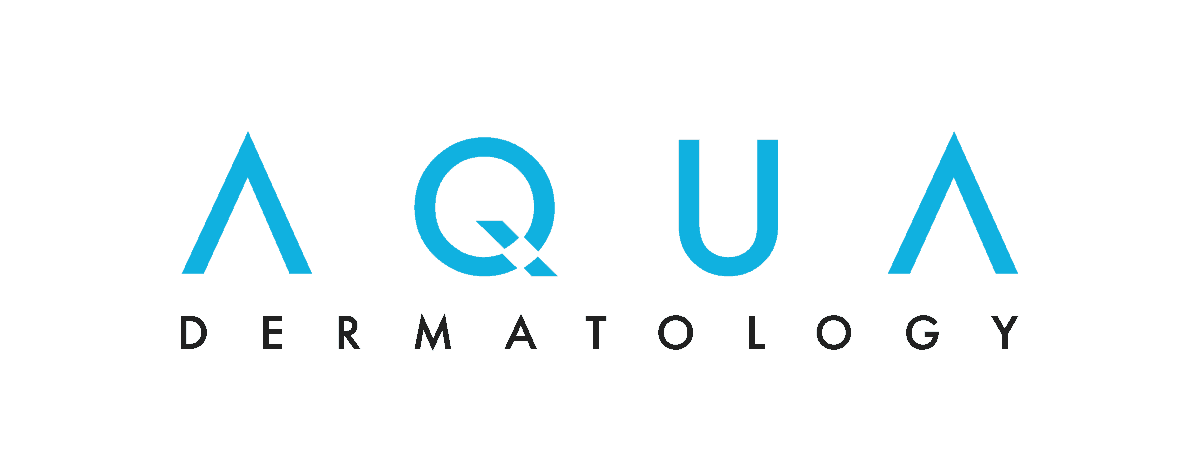AIDS-Related
Skin Conditions
Call (877) 900-3223
AIDS-Related Skin Conditions
Who Is at Risk and How Is It Spread?
Skin and HIV
HIV Testing
Kaposi’s Sarcoma
Facial Lipo Atrophy
Skin Conditions Associated with AIDS
Viral Infections
Fungal Infections
Bacterial Infections
Acquired immune deficiency syndrome (AIDS) is the loss of the body’s ability to fight infections due to the infection caused by a virus called human immunodeficiency virus (HIV). Patients with HIV frequently develop skin conditions, including fungal, viral, and bacterial infections, as well as cancer.
Since it was first recognized in 1981, AIDS has been found to be a major health problem all over the world. A person can be infected with HIV for several years before the problems of AIDS occur. The development of the life-threatening complications of AIDS are due to the virus’ destruction of white blood cells, which are part of the body’s immune system and help fight disease.
The most common, life-threatening situation is a severe and unusual lung infection caused by a common parasite called Pneumocystis jiroveci. This parasite does not cause infections in healthy people.
Who Is at Risk and How Is It Spread?
HIV is spread by sexual secretions or blood products. AIDS may be transmitted sexually via unprotected homosexual or heterosexual sexual activity, as well as through sharing hypodermic needles (such as in intravenous drug use) and receiving HIV-contaminated blood products.
Because patients in their 50s and above are less likely to be concerned with unplanned pregnancy, they may not use condoms when engaging in sexual activity. Older adults account for increasing numbers of Americans facing new HIV infection.
In addition, children born to mothers infected with HIV may contract the virus and later develop AIDS.
The virus is NOT transmitted by casual personal contact. Shaking hands or household contact like sharing beds, baths, toilets, towels, eating utensils, and glassware does not spread HIV.
Skin and HIV
Some HIV infections may last for years and can start to affect the body’s reactions to illness. The diagnosis of skin problems or the lack of a quick response to routine medications may lead to the diagnosis of HIV infection in its early stages.
HIV Testing
If there is a concern about exposure to HIV, the dermatologist will order a special blood test to detect HIV antibodies. The test is performed with the person’s written consent and is strictly confidential to protect privacy. It may take up to three months after infection, however, for the test to yield positive results.
Kaposi’s Sarcoma
AIDS patients can also develop an unusual cancer known as Kaposi’s sarcoma. Kaposi’s sarcoma lesions may vary from pink to dark red, purple, or brown and appear on the skin or in the mouth.
The lesions are painless and do not itch, and can range in size from a pinhead to the size of a large coin. They begin as one or more flat blotches and bumps, but can continue to develop into thickened areas and even large tumors. One or more lesions may be present, with new ones developing anyplace on the skin during the course of the illness.
Occasionally, Kaposi’s sarcoma involves lymph nodes and internal organs such as the spleen, liver, stomach, bowel, and lungs. Because of Kaposi’s sarcoma’s lesions, the dermatologist often is the first physician to diagnose HIV. A small biopsy performed in the office or clinic is done for confirmation.
Large tumors on the face or other exposed areas of the skin are noticeable and can be upsetting to the patient. These can be removed by treatment with local X-ray therapy, cryosurgery (freezing), surgical excision, or injection of special medication. In patients with widespread disease, chemotherapy may be helpful. The new combination of drug treatments for AIDS has made Kaposi’s sarcoma less common than it used to be.
Facial Lipo Atrophy
Facial lipo atrophy occurs when the cheeks become hollow and depressed due to the loss of underlying fat as a response to the HIV virus and certain treatment regimens. Correction may be achieved with fat transfer or other soft tissue filler substances like poly-L-lactic acid.
Skin Conditions Associated with AIDS
Many common skin conditions that occur in healthy individuals also occur in people infected with HIV, but they are frequently more severe and may be more difficult to treat. One or more of these skin conditions may be the first indicator of an immune disorder related to an underlying infection with HIV. Therefore, it is necessary to seek the advice of a dermatologist for evaluation, diagnosis, and treatment.
SEBORRHEIC DERMATITIS
Seborrheic dermatitis is a flaky, red rash on the face (cheeks, forehead, eyebrows, nose, ears), scalp, chest, and groin. Treatment usually involves the use of various medicated creams, ointments, and soaps.
PSORIASIS
Psoriasis in HIV patients often may worsen. A psoriasis flare-up includes an increase in the size and number of the silvery, scale-covered, salmon-pink patches that appear all over the skin, and they are especially severe on the scalp, elbows, and knees. Some patients develop thick, scaly lesions of psoriasis on their palms and soles that are uncomfortable; there may be pus-filled blisters.
Severe generalized psoriasis with widespread itching, redness, and scaling involves the entire body. Such patients may need to be hospitalized for intensive treatments under a dermatologist’s supervision.
Psoriasis in patients with HIV tends to be more resistant to commonly used topical creams and ointments containing cortisone or tar, and may respond poorly to ultraviolet light. Methotrexate, a prescription medication sometimes used by dermatologists for patients with severe psoriasis, could be dangerous in patients with HIV because it can further suppress the immune system.
HIVES, PAPULAR URTICARIA, AND ITCHY RED BUMP DISEASE
Hives, papular urticaria, and “itchy red bump disease” are tiny, pink bumps, often the size of a small pea, that cause widespread itching. Larger patches of hives sometimes occur as well. The persistent itching can be very uncomfortable and difficult to control. It often responds poorly to large doses of antihistamines and topical medications.
FOLLICULITIS AND ACNE-LIKE ERUPTIONS
Folliculitis and acne-like eruptions are multiple small pimples or pustules that develop around hair follicles on the chest, back, face, scalp, legs, and buttocks. This acne-like skin rash also can be very itchy; patients may scratch enough to cause bleeding and secondary infections.
Folliculitis usually is treated with a combination of antihistamines, antibiotics, antibacterial soaps or washes, and topically applied drying lotions used for acne treatment. Ultraviolet light treatment also may be used.
Viral Infections
HERPES SIMPLEX
Shingles can last for weeks.
Topical lotions and oral antiviral medications may help to dry the lesions. The pain (post-herpetic neuralgia) may persist after the rash goes away and can be relieved with prescription medication. For patients with severe or widespread herpes zoster, hospitalization may be needed to provide intravenous antiviral medication as well as strong drugs for pain.
HAIRY LEUKOPLAKIA OF THE MOUTH
This unusual condition appears as small, white, fuzzy patches that most often develop on the tongue. It is believed to be caused by a member of the herpes family of viruses known as the Epstein-Barr virus. Hairy leukoplakia resembles thrush, a yeast infection of the mouth. The lesions of hairy leukoplakia are painless. It is an important signal that the patient is probably infected with HIV.
MOLLUSCUM CONTAGIOSUM
Warts are common, benign, painless growths that are caused by the papilloma virus. They can occur any place on the skin, especially on the feet, hands, face, genitals, and anal areas.
When warts occur in HIV-infected individuals, they tend to be bigger, more numerous, and widespread. In the rectal or genital regions, they often become very large and uncomfortable. Warts in HIV-infected patients may be resistant to standard treatments. Recurrences after treatment are common.
Fungal Infections
YEAST INFECTIONS (CANDIDA/MONILIA)
Yeast infections are caused by a one-celled organism called candida albicans and involve the mouth, vagina, anal region, and skin folds under the arms and in the groin. Frequent and recurrent, a yeast infection appears as a red, itchy rash in the skin folds or a white milky discharge from the vagina.
In the mouth, it is called thrush and appears as white, curd-like patches that are easily scraped off. It commonly causes soreness on the tongue and inner surface of the cheeks. Thrush can be easily confused with oral hairy leukoplakia.
OTHER FUNGAL INFECTIONS
Other fungal infections are common and cause scaly, itchy infections on the feet and hands. One or more nails may be involved and develop thickening, deformity, and discoloration.
Fungal infections of the skin can be effectively treated with topical antifungal creams; however, antifungal pills may be required for stubborn infection. Fungal infection of the nails requires oral treatment for several months.
CRYPTOCOCCOSIS
Cryptococcosis is an unusual infection caused by the fungus cryptococcus neoformans, which is often found in pigeon droppings. It is a potentially fatal disease involving the lungs, brain, and spinal cord. Although rare in the skin, it may cause multiple tiny bumps or pustules that look like acne or small abscesses. Hospitalization may be needed for treatment.





